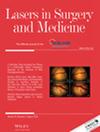One-Year Follow-Up of Acne Vulgaris Patients Treated With Nonablative Monopolar Radiofrequency: Efficacy and Safety Assessment
Abstract
Background
Moderate-to-severe acne vulgaris (AV) remains a therapeutic challenge, often demonstrating resistance to standard interventions, including topical agents, oral antibiotics, and systemic retinoids. Nonablative monopolar radiofrequency (NMRF) offers a promising alternative by delivering controlled dermal heating without epidermal disruption. Initial findings from the authors demonstrated significant reductions in inflammatory lesion counts and sebum production following two NMRF sessions administered 4 weeks apart, with results sustained up to 6 months. This updated study extends the evaluation to include additional clinical assessments at 9- and 12-month posttreatment, providing further insights into the long-term efficacy and safety of this modality.
Objective
To evaluate the extended efficacy and safety of NMRF therapy in the management of moderate-to-severe AV, incorporating follow-up assessments at 9- and 12-month posttreatment.
Methods
The study included 20 participants with moderate-to-severe AV who had been previously enrolled in the authors’ initial investigation. All participants underwent two NMRF sessions, spaced 4 weeks apart, as per the original protocol. Follow-up assessments were conducted at 9- and 12-month posttreatment. Lesions were categorized as inflammatory (papules, pustules, nodules, cysts) or noninflammatory (comedones). Sebum production was measured quantitatively using a Sebumeter at each follow-up visit. Patient-reported outcomes, including perceived improvement and satisfaction, were also documented.
Results
Of the initial 20 participants, 11 completed the 12-month follow-up. Clinical assessments revealed statistically significant reductions in both inflammatory and noninflammatory lesion counts, with the most substantial decreases observed in papules, pustules, nodules, and cysts. Sebum levels continued to decline consistently over the extended follow-up period. Patient satisfaction scores remained high at both time points, and no significant adverse effects were reported, reinforcing the favorable safety and tolerability profile of NMRF therapy.
Conclusion
NMRF is a safe, effective, and minimally invasive treatment for moderate-to-severe AV. The 1-year follow-up data highlight its potential as a long-term treatment option, demonstrating sustained reductions in lesion counts and sebum production following a two-session course.


 求助内容:
求助内容: 应助结果提醒方式:
应助结果提醒方式:


